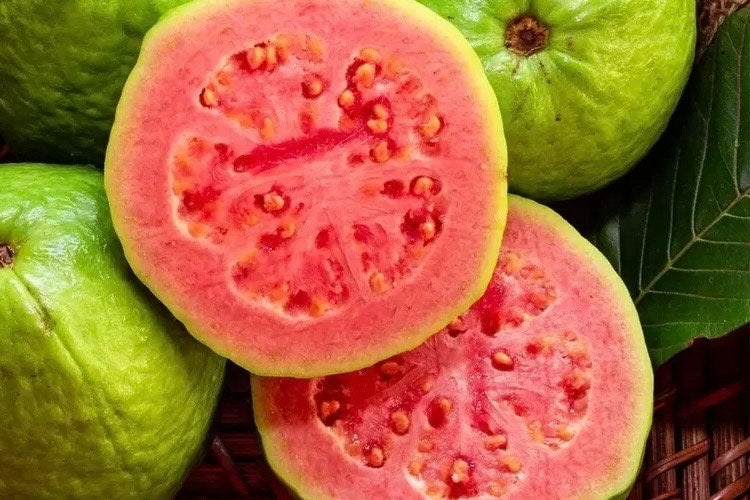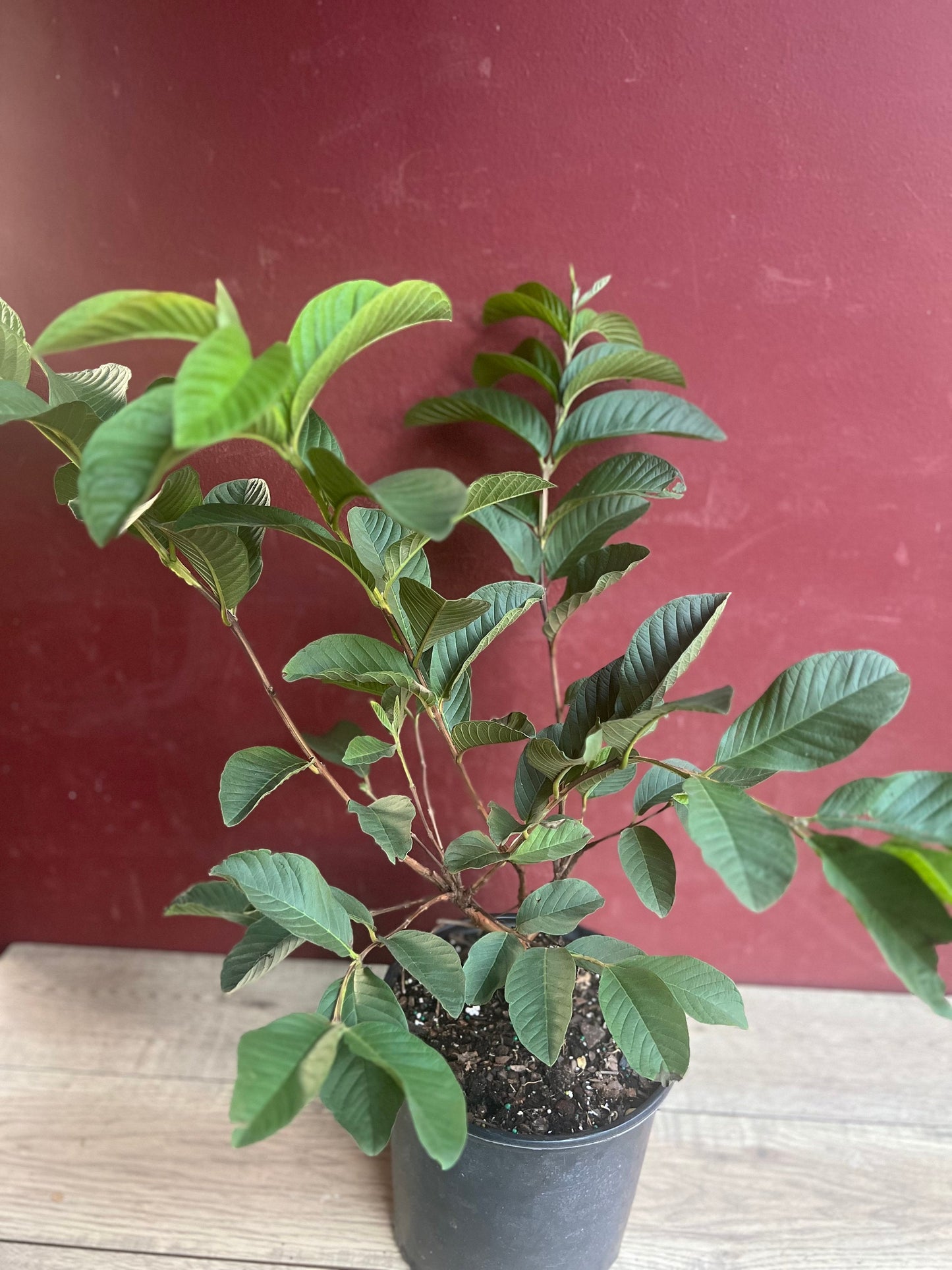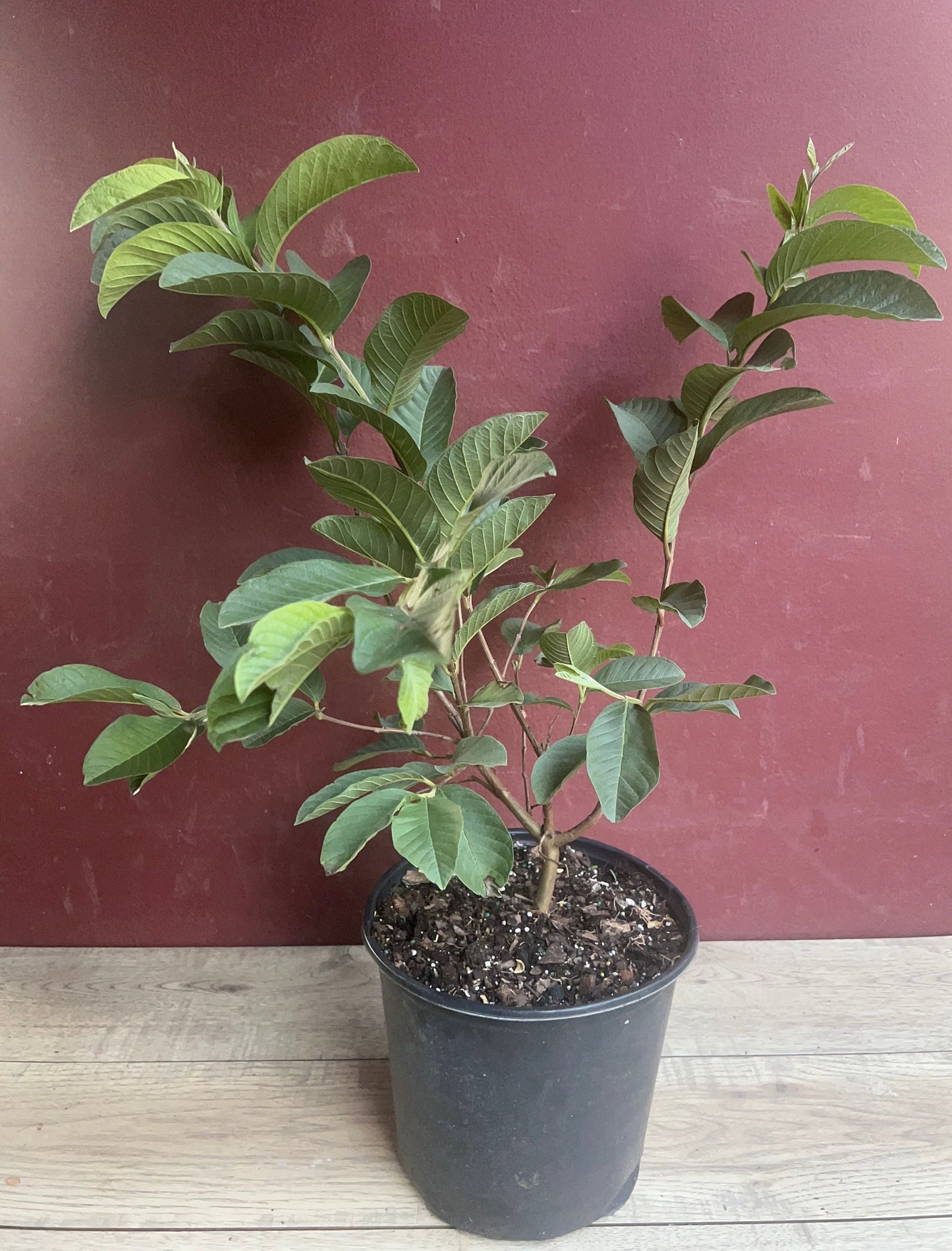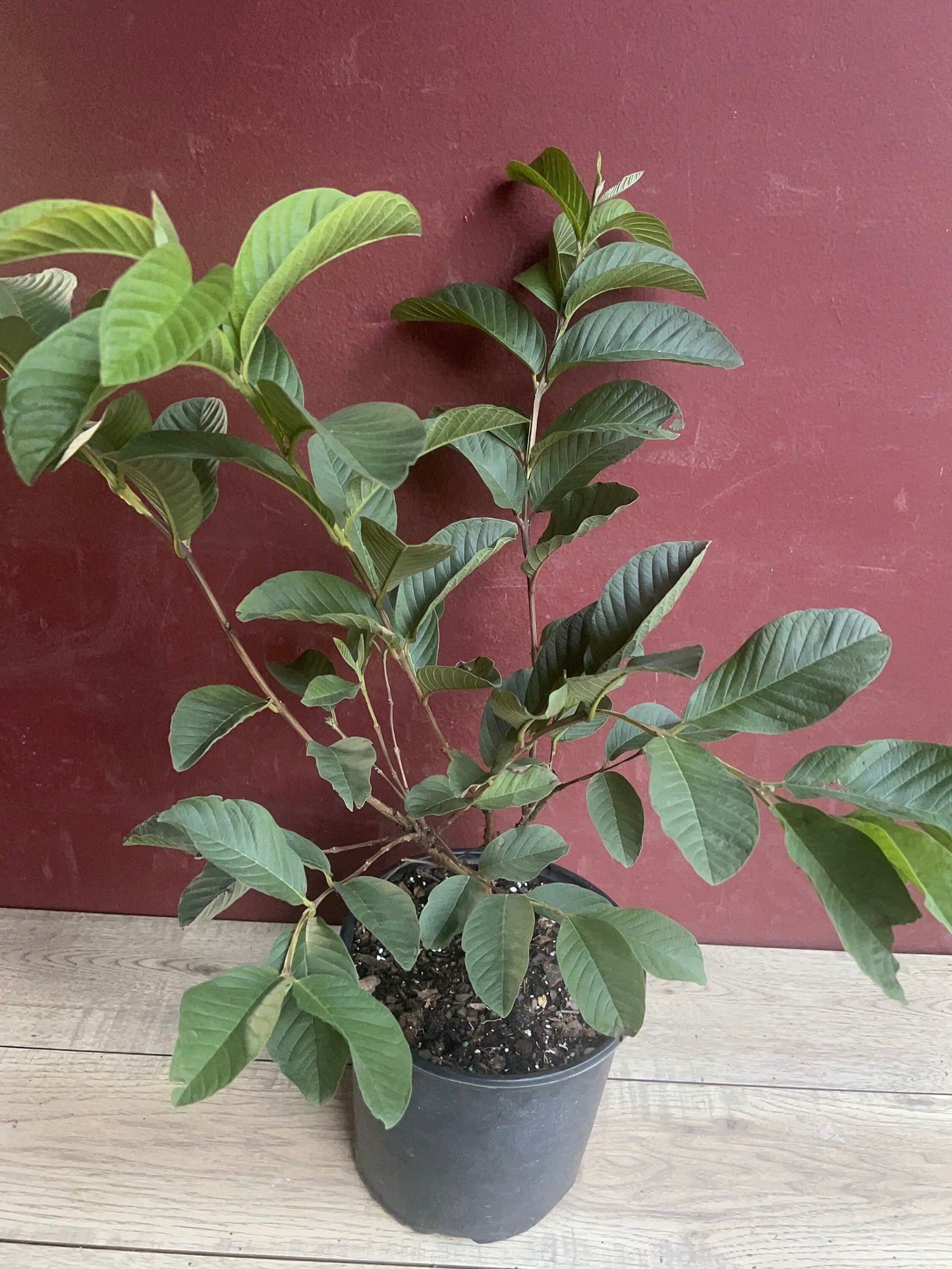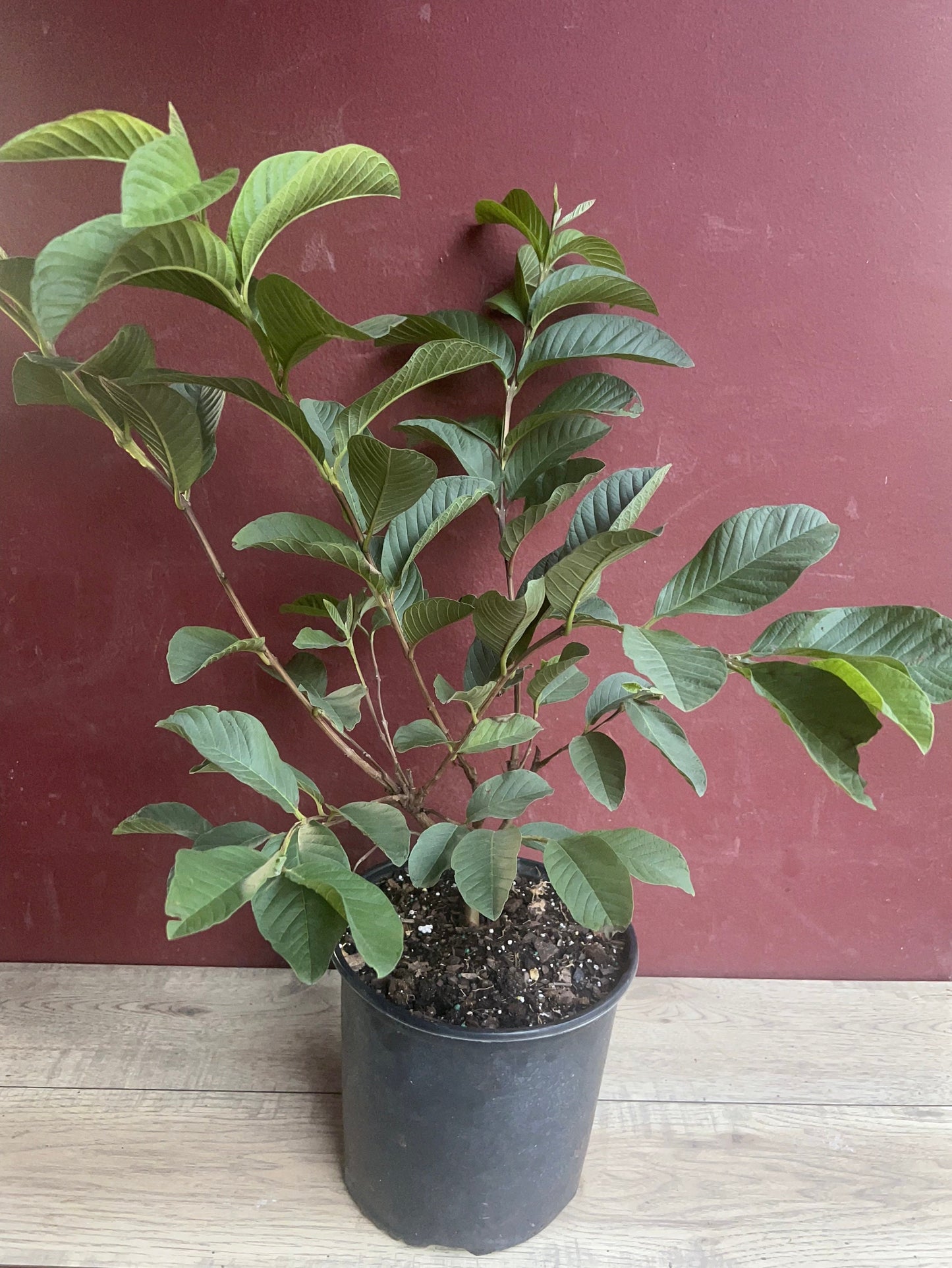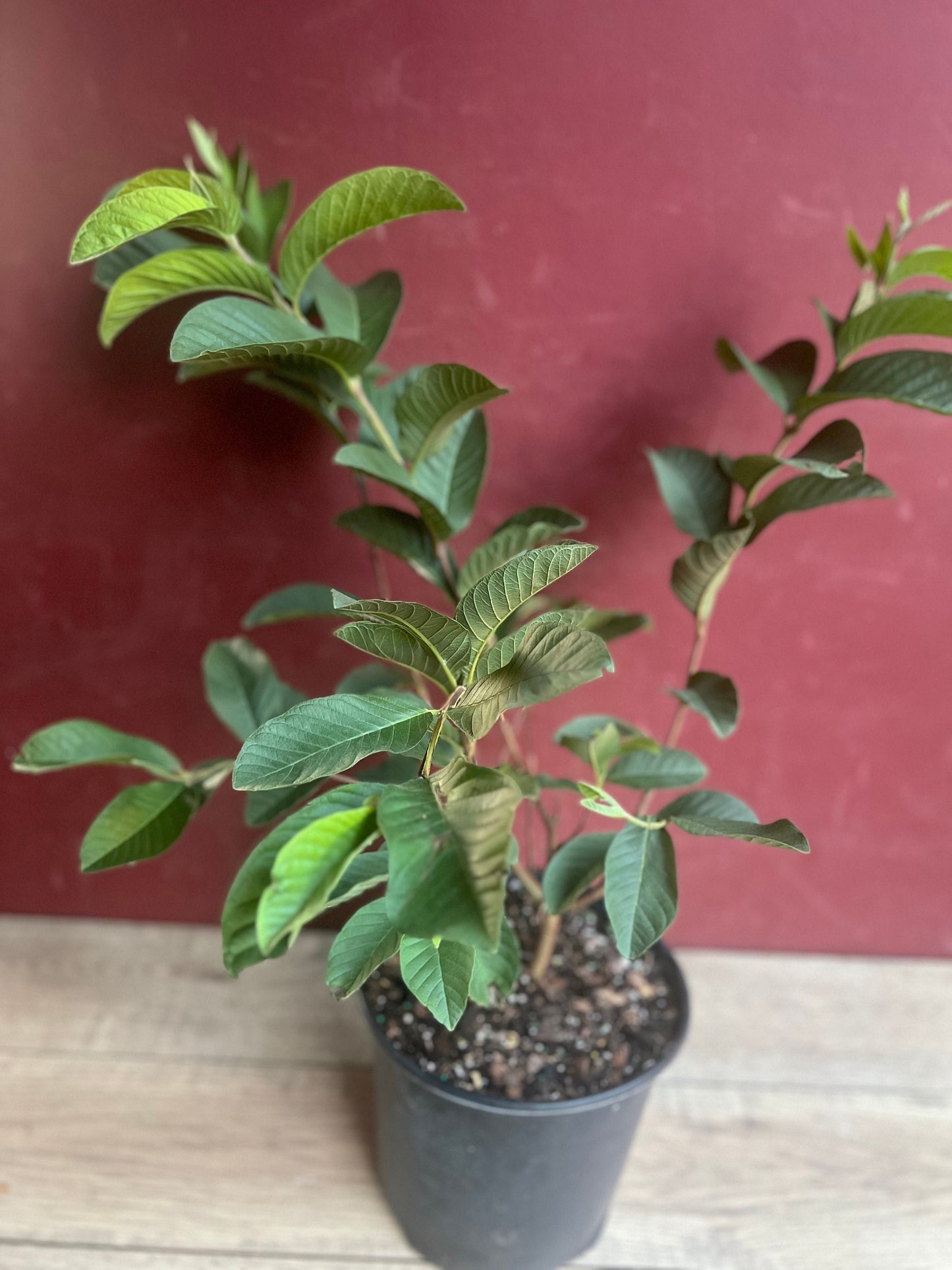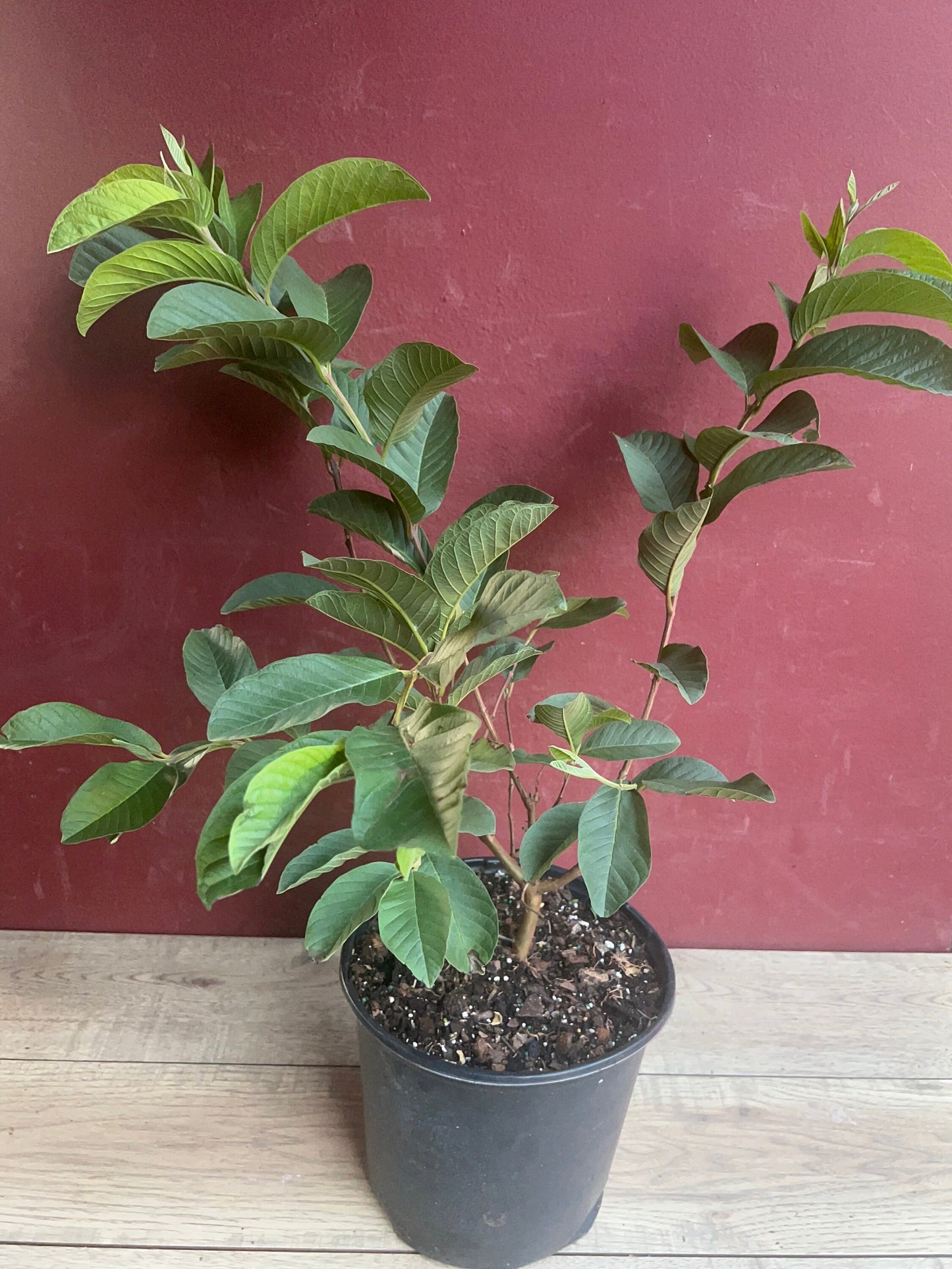1
/
of
7
Guava Plant in 10" Pot, Jambu Batu, Psidium guajava, Pink Guava tree, No Ship to CA and HI
Guava Plant in 10" Pot, Jambu Batu, Psidium guajava, Pink Guava tree, No Ship to CA and HI
Regular price
$58.45 USD
Regular price
$77.94 USD
Sale price
$58.45 USD
Unit price
/
per
Shipping calculated at checkout.
Couldn't load pickup availability
You will receive 1 Pink Guava in a 10" Pot, similar to the pictures.
The Pink Guava (Psidium guajava) is a tropical fruit tree known for its aromatic, sweet, and nutritious fruit with vibrant pink flesh. It’s rich in vitamin C, fiber, and antioxidants. This fast-growing tree thrives in warm climates, producing fruit as early as 2-3 years after planting. Here’s how to care for your Pink Guava tree:
1. Location and Sunlight
- Full Sun: Guava trees need 6-8 hours of direct sunlight each day for healthy growth and optimal fruit production.
- Space: These trees can grow 10-15 feet tall and wide, so choose a spacious area with good airflow to minimize disease risks.
2. Soil Requirements
- Well-Draining Soil: Guavas prefer sandy loam or loamy soil. Avoid poorly drained soil to prevent root rot.
- Soil pH: They grow best in slightly acidic to neutral soil with a pH between 5.5 and 7.0.
- Soil Preparation: If your soil is clay-heavy, amend it with organic matter or coarse sand to improve drainage.
3. Watering
- Regular Watering: Keep the soil moist but not waterlogged. Water regularly, especially during dry spells, but avoid over-watering.
- Deep Watering: Water deeply to encourage strong root growth, but ensure the soil drains well. Let the top inch of soil dry between waterings.
- Drought Tolerance: Once established, guavas are relatively drought-tolerant, but consistent watering improves fruit quality.
4. Fertilizing
- Balanced Fertilizer: Use a balanced fertilizer (e.g., 10-10-10) for healthy growth. Organic fertilizers like compost work well, too.
- Fertilizing Schedule: Fertilize in spring and summer to support active growth. Avoid late-season fertilizing to prevent frost-sensitive new growth.
- Micronutrients: Guavas benefit from zinc and boron for healthy fruiting.
5. Pruning
- Shape and Size: Prune guava trees to maintain shape, encourage airflow, and remove dead or damaged branches.
- After Harvest: Prune in late winter or early spring after fruiting to prepare for the next growing season.
- Encourage Fruit Production: Light pruning helps stimulate new growth and enhances fruit yield.
6. Pest and Disease Management
- Common Pests: Guavas can attract aphids, mealybugs, fruit flies, and whiteflies. Use neem oil or insecticidal soap for control.
- Diseases: Guavas may develop root rot, anthracnose, or rust. Prevent these by ensuring proper drainage, avoiding overhead watering, and pruning regularly for good air circulation.
- Fruit Protection: Use netting or organic repellents to protect fruits from birds and insects.
7. Pollination and Fruit Development
- Pollination: Guavas are self-pollinating, but cross-pollination with another tree can improve yield. Bees and other insects assist in pollination.
- Fruit Production: Guava trees can bear fruit as early as 2-3 years (from grafted trees). Fruit ripens in summer or fall, depending on climate and care.
8. Temperature and Climate
- Tropical/Subtropical: Guavas thrive in warm climates with temperatures between 70°F and 90°F (21°C to 32°C).
- Frost Sensitivity: Guava trees are frost-sensitive and may be damaged by temperatures below 32°F (0°C). In colder regions, grow guavas in containers for easy winter protection.
9. Harvesting
- When to Harvest: Guavas are ready when the skin softens and the flesh turns pink. Harvest the fruit during the ripening season (late summer to fall).
- Harvesting Method: Gently twist or cut the fruit from the tree to avoid branch damage. Enjoy fresh or use in smoothies, jams, or juices.
10. Container Growing (If Applicable)
- Container Care: If growing in a pot, choose a large container with good drainage. Use a well-draining potting mix and place the container in a sunny spot.
- Indoor Care: In cooler climates, bring potted guavas indoors during winter or provide extra warmth and light.
Share
